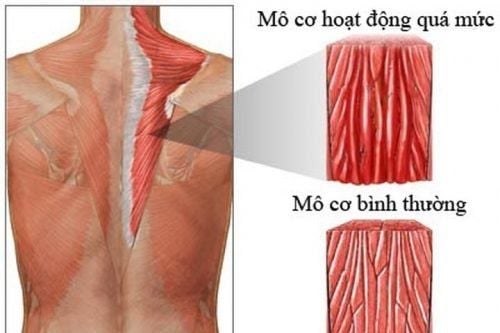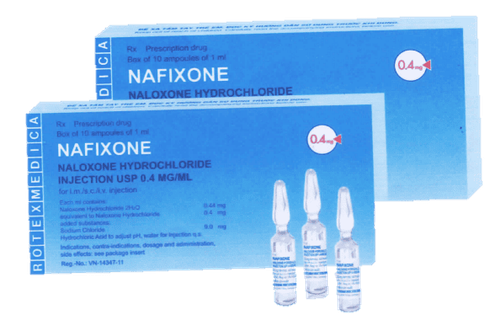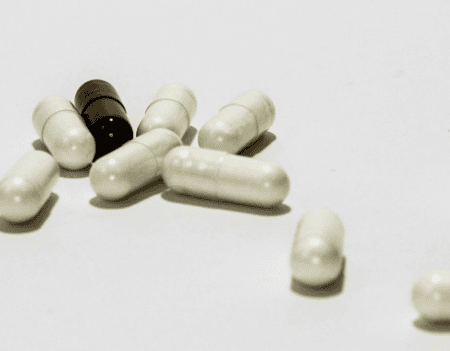This is an automatically translated article.
Bridion is a drug used to neutralize nerve blockade. In addition to the effective use that the drug brings. Bridion is also a drug with many undesirable side effects.
1. What is Bridion?
What is Bridion? Bridion has the main ingredient Sugammadex, belongs to the group of emergency and detoxifying drugs, indicated for use to neutralize neuromuscular block caused by rocuronium or vecuronium - these are 2 neuromuscular blocking drugs that cause paralysis temporary.
Note: Only sugammadex is recommended to reverse the common neuromuscular blockade caused by rocuronium in children and adolescents.
2. Dosage and how to take Bridion
How to use: Bridion should only be used intravenously with direct injection. The direct dose should be given as a rapid injection over 10 seconds, either directly into a vein or into an intravenous line.
Dosage: The recommended dose of sugammadex depends on the degree of resolution of the neuromuscular blockade. Specific
In adults:
Conventional resolution: Use sugammadex at a dose of 4 mg/kg if resolution is achieved at least 1-2 reactions after using rocuronium or vecuronium causing block. The mean time to recovery set the ratio T4/T1 to 0.9 over a period of about 3 minutes. Immediate resolution of rocuronium blockade: Sugammadex 16 mg/kg should be administered after the patient has been on rocuronium bromide 1.2 mg/kg for 3 minutes, the median time to recovery. ratio T4/T1 to 0.9 about 1.5 minutes. For patients with renal failure: Adjust dose accordingly. Specifically, for patients with mild and moderate renal impairment with creatinine clearance > 30 and < 80 mL/min, the dose used is similar to the usual adult dose. Sugammadex should not be used in patients with severe renal impairment including those requiring hemodialysis with creatinine clearance < 30 mL/min. For patients with severe renal failure, doctors recommend not using the drug. Elderly Patients: After administration of sugammadex during T2 recurrence following rocuronium neuromuscular blockade, the median time to recovery of the T4/T1 ratio to 0.9 in adults 18-64 years of age was 2.2 minutes, in the elderly 65-74 years old is 2.6 minutes and in the very elderly over 75 years old is 3.6 minutes. Recovery time in the elderly tends to be slower. Obese patients: In obese patients, the dose of sugammadex should be based on the actual body weight of the patient. The same dose as adults can be used. Hepatic impairment: For mild to moderate hepatic impairment, no dose adjustment is required as sugammadex is eliminated primarily by the kidneys. Caution should be exercised when considering the use of sugammadex in patients with severe hepatic impairment or when hepatic impairment is associated with coagulopathy. Children and Adolescents: Sugammadex 2 mg/kg should be used to normally reverse rocuronium block in the presence of T2 in children and adolescents 2-17 years of age.
3. Side effects of the drug Bridion
Possible side effects of Bridion are as follows:
Some common adverse reactions such as injury, poisoning and complications from the procedure. Uncommon reactions such as immune system disorders Surgical complications: These include symptoms such as cough, tachycardia, bradycardia, movement and increased heart rate. Drug-induced hypersensitivity reactions: Symptoms associated with these reactions may include: flushing, urticaria, erythema, hypotension, cardiac arrhythmias, bronchospasm, and obstructive events. lung. Severe hypersensitivity reactions can be fatal. Airway Complications During Anesthesia: Manifestations include resistance to the endotracheal tube, surgical irritation, cough, slight startle, cough during anesthesia or during surgery. Cardiac Arrhythmia: Bradycardia is one of the reactions of patients after taking sugammadex. People with lung disease or a history of lung complications may experience bronchospasm syndrome.
4. Drug interactions
Possible Bridion drug interactions during use are as follows:
Toremifene: The drug may delay the recovery of the T4/T1 ratio to 0.9 in some patients receiving toremifene IV fusidic acid : The use of fusidic acid in the preoperative period may delay recovery of the T4/T1 ratio to 0.9 in some patients receiving prior toremifene. Hormonal Contraceptives: Interaction between sugammadex at a dose of 4 mg/kg and progesterone has been diagnosed to cause a decrease in progestogen levels leading to a decrease in the effectiveness of the drug. Interactions with laboratory tests: In general, the use of sugammadex in patients with sugammadex will not affect the laboratory tests, except for serum progesterone and some parameters related to coagulation. .
5. Be careful when using drugs of Bridion
Patients need to monitor respiratory function during recovery: The patient will be assisted with ventilation until spontaneous respiratory function is completely restored after the neuromuscular blockade is resolved. Even with full recovery from neuromuscular blockade, other drugs used after surgery can depress respiratory function, so that in some cases the patient still requires ventilatory support. Effects on hemostasis: There have been cases of patients experiencing reactions with prolonged hromboplastin time and prothrombin time (PT). Renal Impairment: The use of sugammadex is not recommended in patients with severe renal impairment, including those requiring hemodialysis. Sugammadex should not be used to reverse blockade induced by nonsteroidal neuromuscular blocking agents such as succinylcholine or benzylisoquinolinium compounds. Bridion should not be used to reverse neuromuscular blockade caused by other neuromuscular blocking agents (other than rocuronium or vecuronium) due to insufficient studies demonstrating efficacy and safety in those drugs. Cardiovascular disease associated with circulatory stasis or edema may result in a longer recovery time. Use in Pregnancy: Animal studies have shown no direct or indirect harmful effects on pregnancy, embryonic development, parturition or infant development. at birth. However, caution should still be exercised when Bridion is administered to pregnant women. Lactation: There are insufficient data to demonstrate that sugammadex is excreted in human milk. However, there have also been studies in animals showing that sugammadex is excreted in low concentrations in milk. Therefore, when using this medicine in this case, it is necessary to consult a doctor. Bridion has the main ingredient Sugammadex, which belongs to the group of emergency and antidote drugs, indicated for use to neutralize neuromuscular blockade caused by rocuronium or vecuronium.
To ensure effective treatment and avoid unwanted side effects, patients need to strictly follow the instructions of doctors and medical staff.
Follow Vinmec International General Hospital website to get more health, nutrition and beauty information to protect the health of yourself and your loved ones in your family.
Please dial HOTLINE for more information or register for an appointment HERE. Download MyVinmec app to make appointments faster and to manage your bookings easily.













